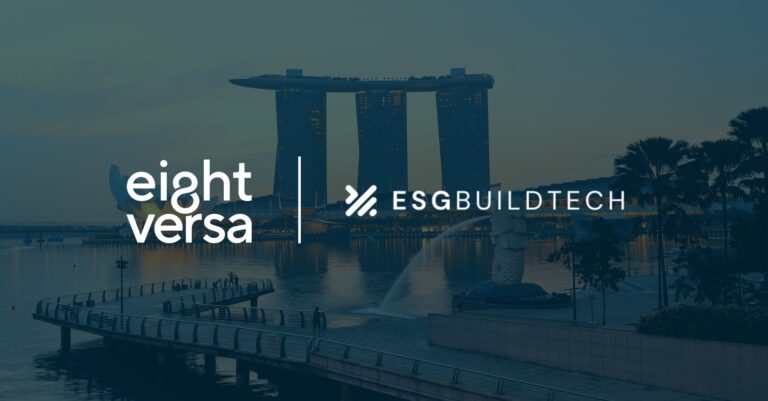Is Scope 4 Knocking at the Door?
The need to address climate change has reached a new level of global urgency. Around the world, companies are increasingly taking up the task of accounting for their carbon footprint. To aid with this, the World Resource Institute (WRI) and the World Business Council for Sustainable Development (WBCSD) developed the Greenhouse Gas Protocol (GHGP) in 2004 which introduced the concept of dividing carbon emissions into ‘Scopes’. It has become the dominant accounting methodology for greenhouse gases (GHG) emissions reporting and is being adopted by governments around the world to advise organisations on how to calculate their carbon footprints.
When first introduced, the GHG protocol only included Scope 1 and Scope 2 emissions:
- Scope 1 – Direct GHG emissions that occur from sources that are controlled or owned by an organisation (e.g., emissions associated with fuel combustion in boilers, vehicles).
- Scope 2 – Indirect GHG emissions are associated with the purchase of electricity, steam, heat, or cooling. Although Scope 2 emissions physically occur at the facilities where they are generated, they are accounted for in an organisation’s carbon footprint because they are a result of the organisation’s energy use.
Only later in 2011, Scope 3 was introduced to include the fuller picture of an organisation’s carbon footprint. This contains 15 individual categories and includes all the other indirect emissions that occur in an organisation’s value chain, both upstream and downstream. For many businesses, Scope 3 is often where the biggest impact is, and emissions are known to account for more than 70% of their carbon footprint. For example, an organisation that manufactures products will often have significant carbon emissions from the extraction, manufacture and processing of the raw materials.
What are Scope 4 emissions?
As Scope 3 was only introduced after greater review and reflection on a company’s impact, it begs the question when could Scope 4 be introduced? Where Scope 1-3 account for the emissions caused by a service or product, Scope 4 aims to account for the emissions prevented by a service or product. The term Scope 4, often referred to as ‘avoided emissions’, are emission reductions that happen outside of a service or product’s life cycle or value chain, but as a result of the use of that service or product. The concept of a Scope 4 is relatively new and of considerable interest to companies trying to develop and promote low-carbon services and products.
Scope 4 emissions describe emissions that can be avoided through a service or a product. It is an entire category that falls outside current agreed protocols. In recent years, there have been increasing calls for the need of a Scope 4 category, as more companies are wanting to declare how their products are having a positive impact on the environment rather than simply stating the negative impact they are having. In 2017, more than a third of companies surveyed by the Carbon Disclosure Project (CDP) claimed that they make products that help consumers minimise their carbon footprint.
There is, however, difficulty in reporting the comparative emission impacts of products and the complexity in carbon accounting requires addressing before companies make claims about Scope 4 emissions. In an article published by the WRI in 2019 on Scope 4 emissions, researchers point to how companies have been claiming that products such as cold-water laundry detergents, fuel efficient tyres and energy-lean data centres ultimately help their consumers reduce emissions. But these Scope 4, avoided emissions, are often unverifiable and inaccurate.
Much of the talk surrounding Scope 4 emissions has gathered pace since 2020 and the impact that Covid-19 had on work patterns. It’s clear how the unprecedented growth of remote working has led to a boom in web-conferencing services such as Zoom, Skype and Microsoft Teams. Companies with technology services such as these will benefit from Scope 4 emissions becoming universally accounted for in carbon emission assessments as they are providing a service which is contributing to the avoidance of emissions from transport, a GHG source responsible for 20% of global emissions. And if we look even further ahead at the new era of digital connectivity with the likes of the Metaverse, more questions will be asked on how this can positively contribute towards avoided emissions.
If companies are to make avoided emissions claims, to avoid accusations of greenwashing, there are ways in which they can improve their accounting methods:
- Do not cherry pick – companies should disclose both the negative and positive impacts of all the products or services in their portfolio, rather than limiting their analyses to low-carbon products that are known to reduce carbon emissions compared to alternative products.
- Transparency about assumptions – at present, assumptions remain the most effective method of evaluation for Scope 4 emissions, particularly for products with long life spans or multiple purposes where data availability is limited. Therefore, companies should state their assumptions upfront and clearly.
- Changes in consumer and user behaviour – to provide a more holistic overreaching assessment of a service or product’s emission impact, companies should provide a more holistic view that considers spillover impacts and trade-offs when using the service or product. If an online web-conferencing service requires the additional use of home energy, rather than a more efficient office environment, this increase in energy consumption needs to be addressed. Whereas, if a product requires greater maintenance or cleaning that will result in higher energy usage, it could cancel out the emissions reduction claims that the company made while producing it.
Before embarking on Scope 4 reporting, companies should ensure they report a complete corporate value chain inventory, including Scope 1, 2 and 3 emissions. The golden rule is to always provide clear and complete information and ensure transparency and accountability. Eight Versa have a team of in-house carbon specialists to assess your Scope 1, 2 and 3 carbon emissions and advise upon decarbonisation recommendations. And with the Natural Carbon Solutions certification scheme you can verify and certify your route with greater accountability to carbon neutrality and beyond.
Jonny Greenall, Sustainability and Carbon Footprinting Consultant at Eight Versa






